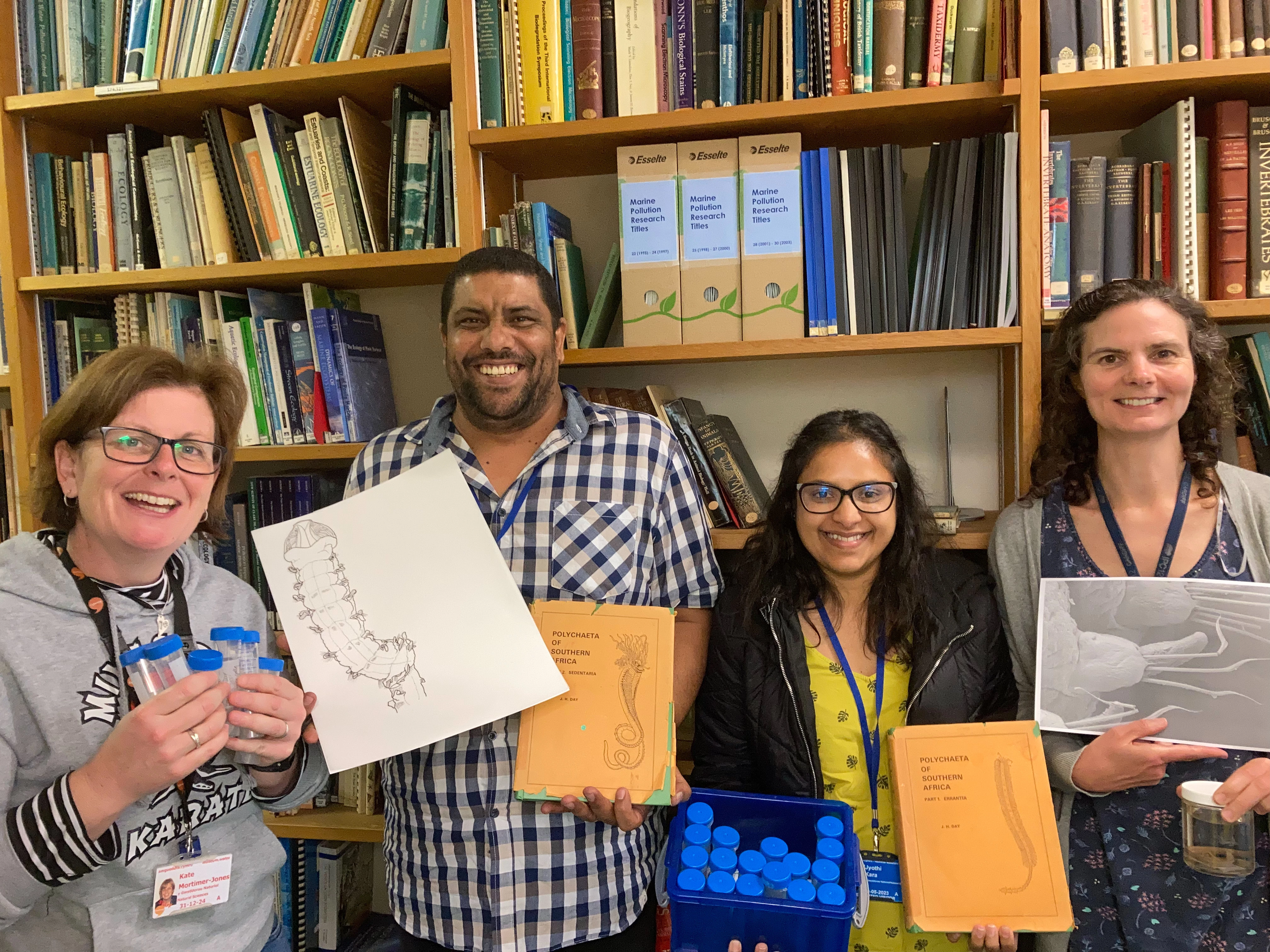Uncovering new species
, 8 July 2024
Amgueddfa Cymru scientists discover new species from South Africa and the UK
We’ve recently been working on an exciting project between Amgueddfa Cymru and scientists from Iziko Museums of South Africa and Cape Peninsula University of Technology, and we’ve uncovered several new species of marine bristle worms.
The project started in 2023, funded by a Royal Society International Exchanges Grant which enabled us to collaborate on this important, but less well-known, group of animals.
Of all the life in our oceans, marine bristle worms, or polychaetes to give them their scientific name, may not be the first that spring to mind. However, they play a vital role in the health of our oceans, and are an important food source for many other animals. So, while many people might not know much about them, it’s important that we discover more about them - and how many species there are. Whilst the name ‘worm’ doesn’t necessarily conjure images of beautiful species, we like to think that many marine bristle worms are genuinely ornate and magnificent.
Sadly, despite their importance, we don’t even know how many species are out there, although globally, there are at least 12,000 different species! That’s where Amgueddfa Cymru scientists step in. We, Dr Teresa Darbyshire and Katie Mortimer-Jones, are specialists in marine bristle worms and have been working with two scientists, Dylan Clarke and Dr Jyothi Kara, from South Africa on a project to try and untangle the identity of some of the marine bristle worms.
Although surveys have been done for the last two centuries, you may be surprised to know that we’re still finding new species in the UK. Similarly, whilst there was much work done around South Africa in the 1950s and 1960s by the University of Cape Town, recent evidence suggests that there may be in excess of five hundred unnamed, and yet-to-be discovered, marine bristle worm species in the region. With this in mind, we as a team of scientists embarked on a project to investigate marine bristle worms in both regions to see if some of this underestimated biodiversity could be uncovered. Dylan and Jyothi travelled over to National Museum Cardiff in May 2023 and we visited Iziko Museum of South Africa in June.
Museum collections are an essential part of work like this, as they’re an unique record of species and habitats present at any particular time. They enable scientists to be able to compare similar specimens to see if they’re from one or more species. So, as a team, we didn’t have to stray far from our museums to find what we were looking for.
We were busy throughout 2023 taking images, making drawings, and describing the new species that we’d uncovered. One of the most exciting parts of the project was to decide on names for the new species. We settled on:
1) Magelona ekapa, a species of shovel head worm from the Western Cape, which gets its name from the Xhosa word eKapa, meaning ‘coming from the Cape’
2) Arabella ampulliformis, from Devon, which gets its name from the word ampulliform, describing a flask-shaped part of the worm and
3) Arabella umgazanae, which were collected from the coast south of the Mngazana (formerly known as the Umgazana) river in the Eastern Cape, South Africa.
We enjoyed sharing initial results at the 14th International Polychaete Conference in Stellenbosch in July 2023, and the full results have just been published in two peer-reviewed scientific papers in the journal African Zoology. The papers provide identification keys for several groups of marine bristle worms in Southern Africa, and in-depth descriptions of multiple species. Hopefully this will mean further new species can be uncovered by providing detailed comparisons of animals, as well as promoting accurate identification of animals in both countries.
One of the important reasons that Welsh scientists study species, both at home and further afield, is to understand the distribution of each species. It also helps us to recognise that if a new species is discovered in a region, is it truly new to science, or perhaps a non-native species which has been artificially transported around the world? If these are invasive species, they can cause a detrimental effect, so we need to know as early as possible. This will be especially important with climate change.
So, next time you step on to the beach, think about the wonderful marine bristle worms beneath your feet and the important role they play in keeping our oceans healthy – and also remember the scientists at Amgueddfa Cymru working hard to help discover and protect them.
By Kate Mortimer-Jones and Teresa Darbyshire
To find out more, visit:



